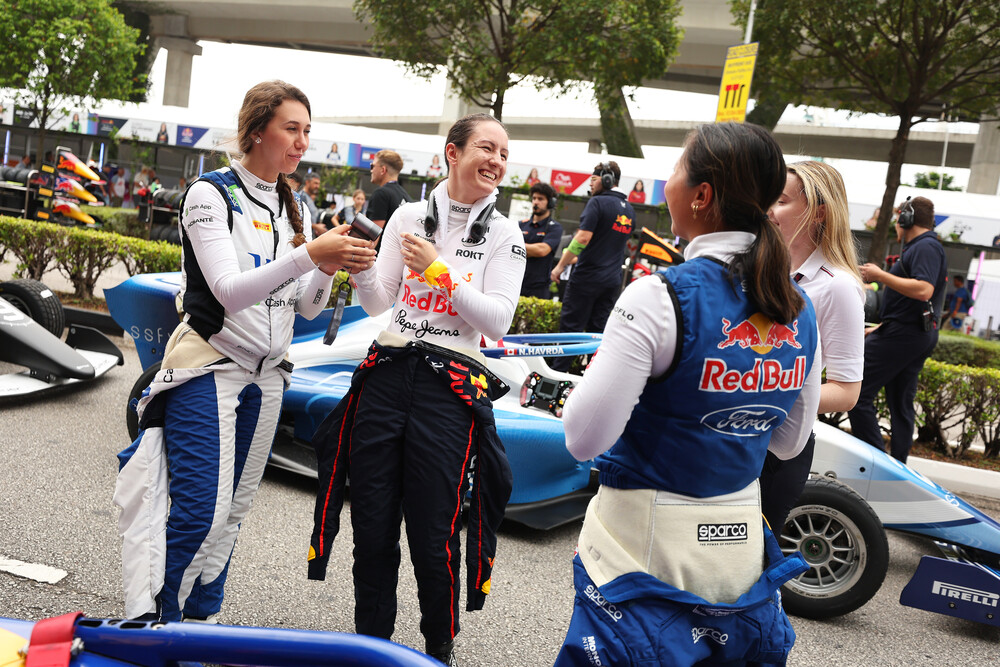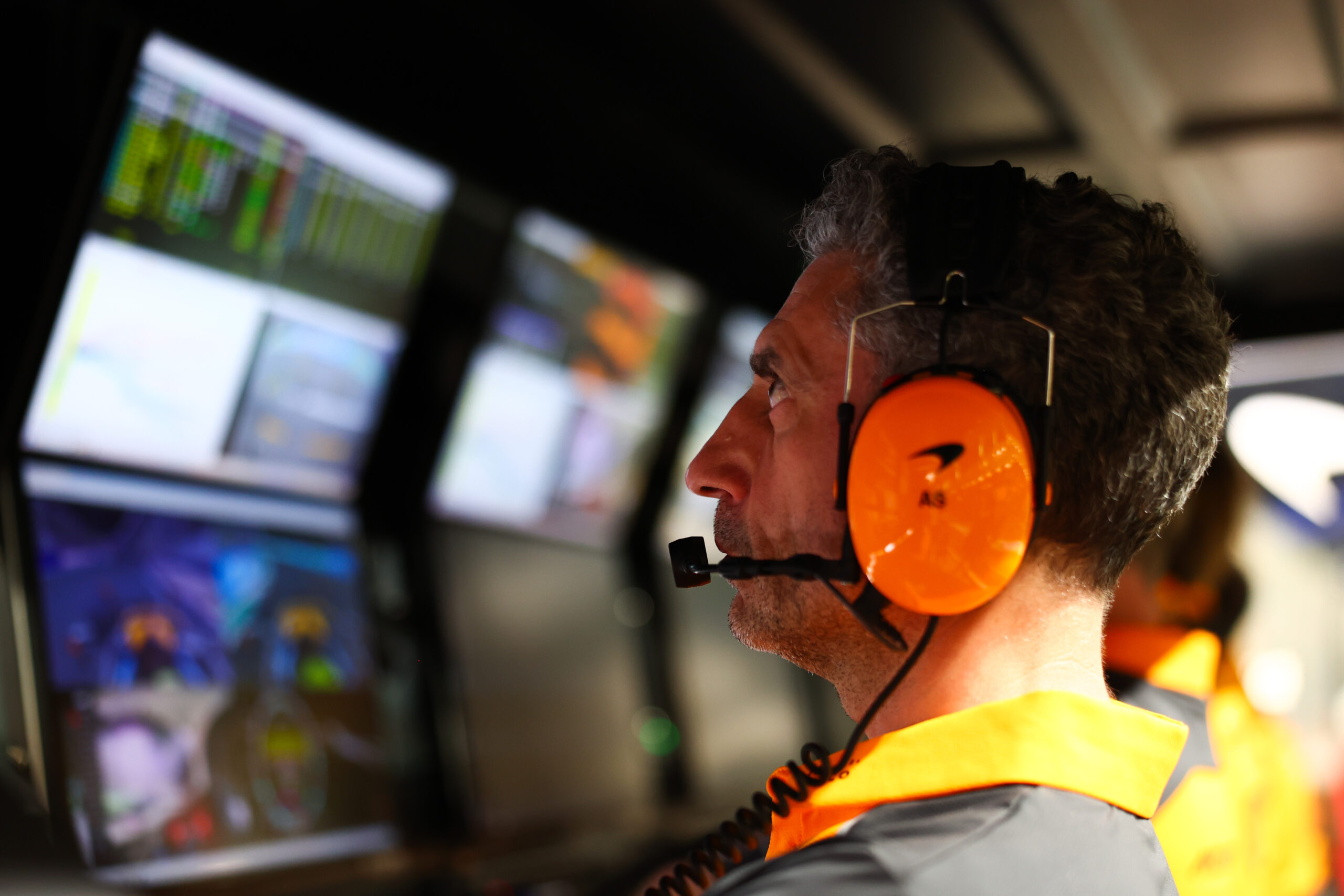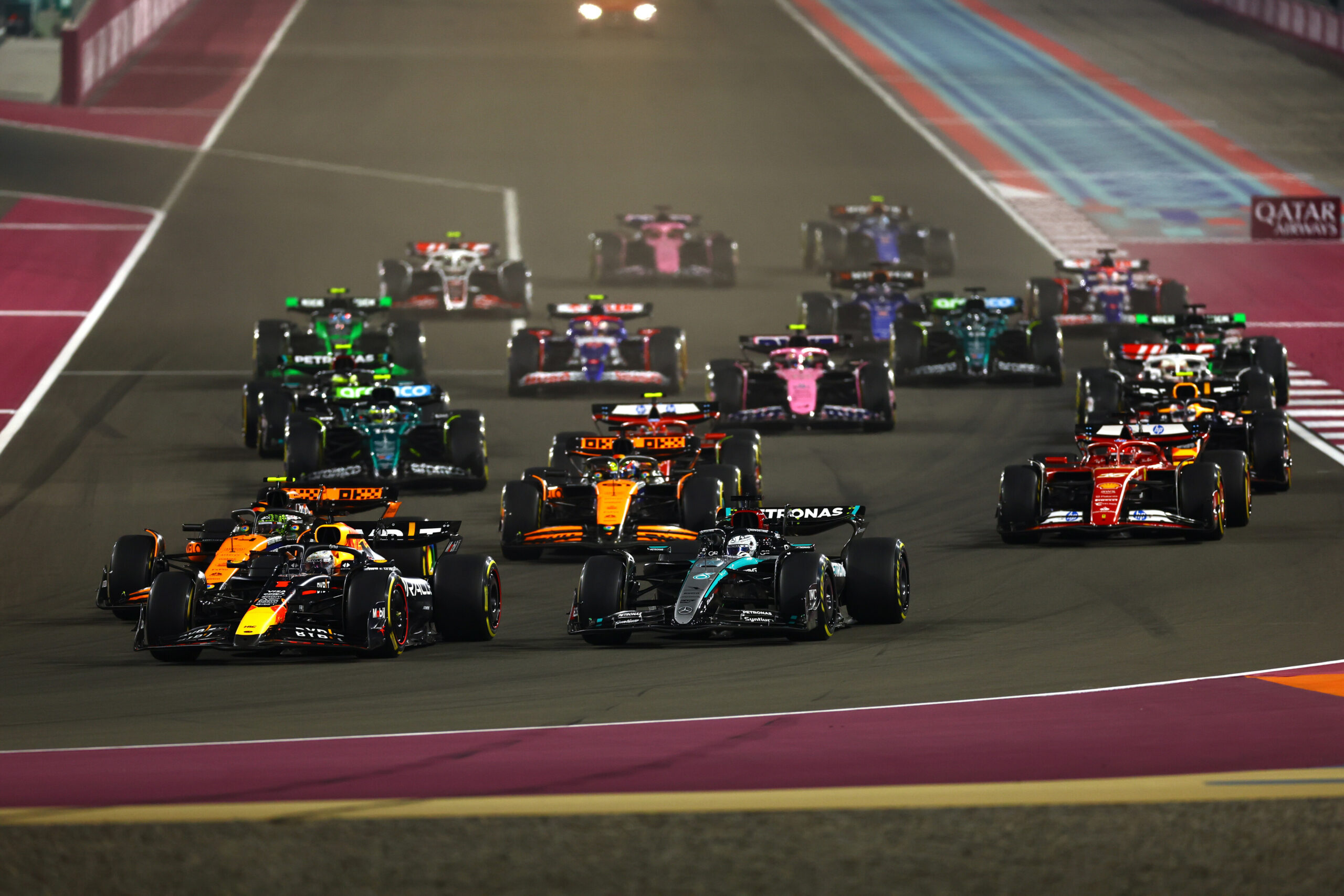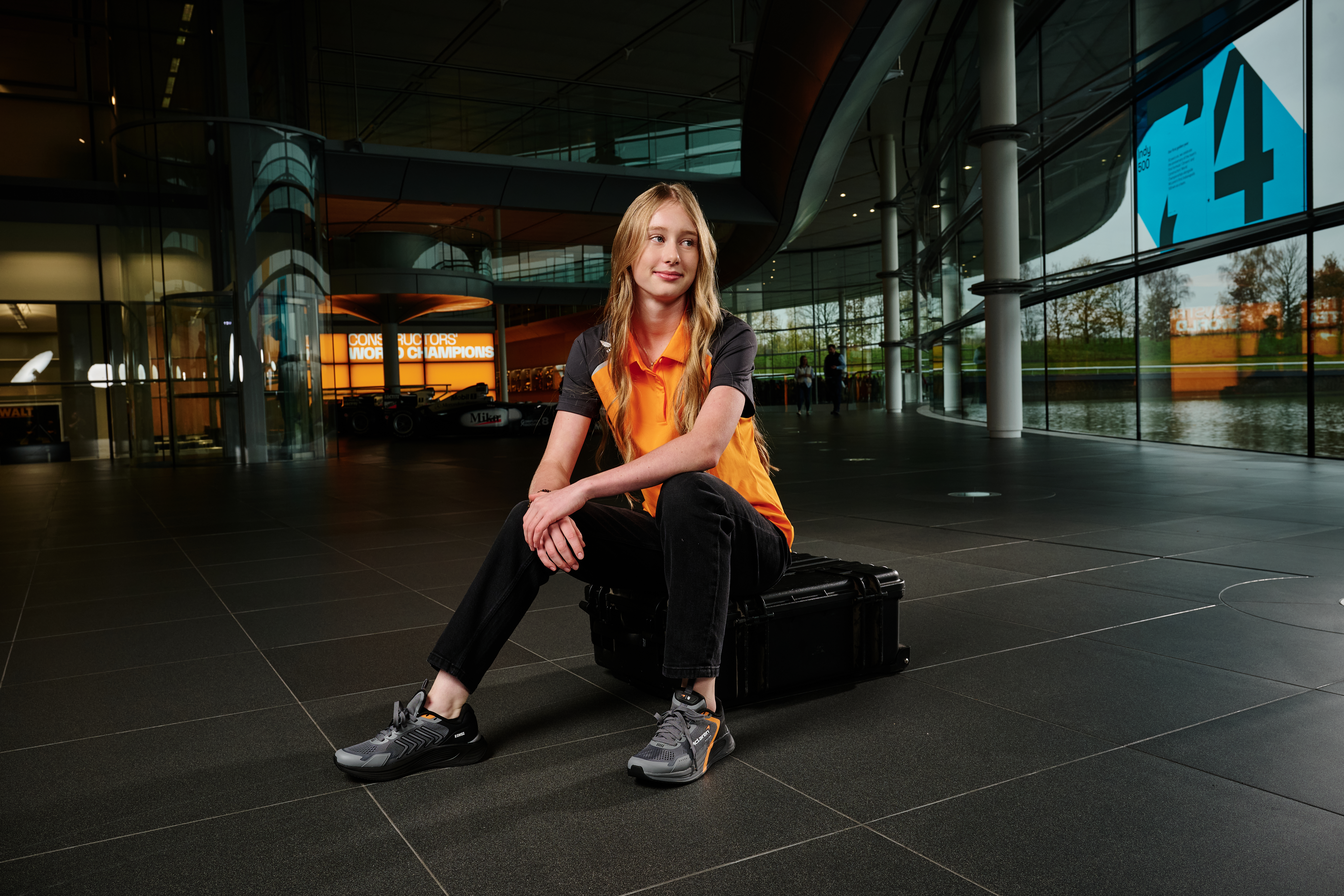After F1 Academy’s only Free Practice session in Singapore, Alisha Palmowski remains confident in her abilities to take pole position. When asked whether she believed she has a chance at pole, she stated: “Of course, I wouldn’t have come if not!”.
The Brit held the fastest time for much of the Free Practice session, before Pin and Weug knocked her down to P3. Palmowski’s fastest lap sat 0.051s behind Pin in P1.
Reflecting on her Free Practice
Reflecting on her P3 in Free Practice, Palmowski shared her joy, stating: “I’m feeling really happy,”. This weekend marks her first visit to the Marina Bay Circuit. This strong performance further proving her potential.
While the Brit acknowledged that this session was used to become familiar with the track, she also added that she was fond of the track. With such a technical circuit at hand, she admitted that this was not a perfect lap. Palmowski revealed she had plenty of time still to unlock.
“It was a really good session. Obviously, my first time at the track, so just getting up to speed learning the circuit. I’m a big fan, it’s a really technical circuit so a big challenge. But we’ve got a great balance in the car. It was not at all the perfect lap for me, so we’ve got a lot of time still to unlock. Hopefully we can make that step forward for Qualifying.”
While Palmowski admits challenges appeared “everywhere” throughout the 4.927km circuit, she acknowledged sector two as the trickiest. She stated: “I’d say Sector 2, it’s very technical in particular,”. The Brit went on to explain just how important a strong exit to each corner is in Singapore.
With many long straights, it is crucial to find a balance between corner entry and exit speed. This is now one of her focuses ahead of her search for pole position in Qualifying.
“The exits are so important because many long straights on this circuit so it’s finding the right compromise between entry speed and exit speed, which is what we’re just trying to refine now so fingers crossed we can get it right.”





